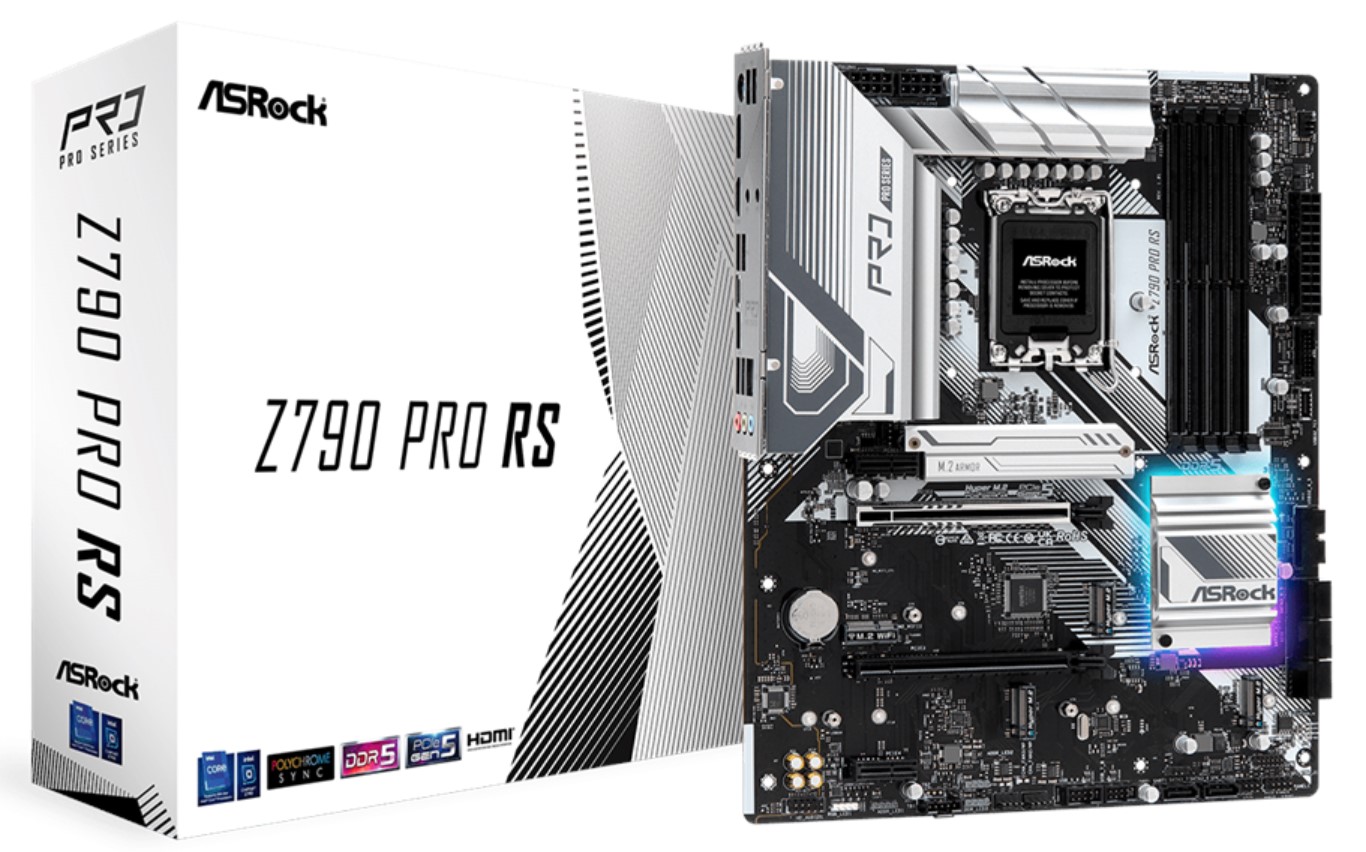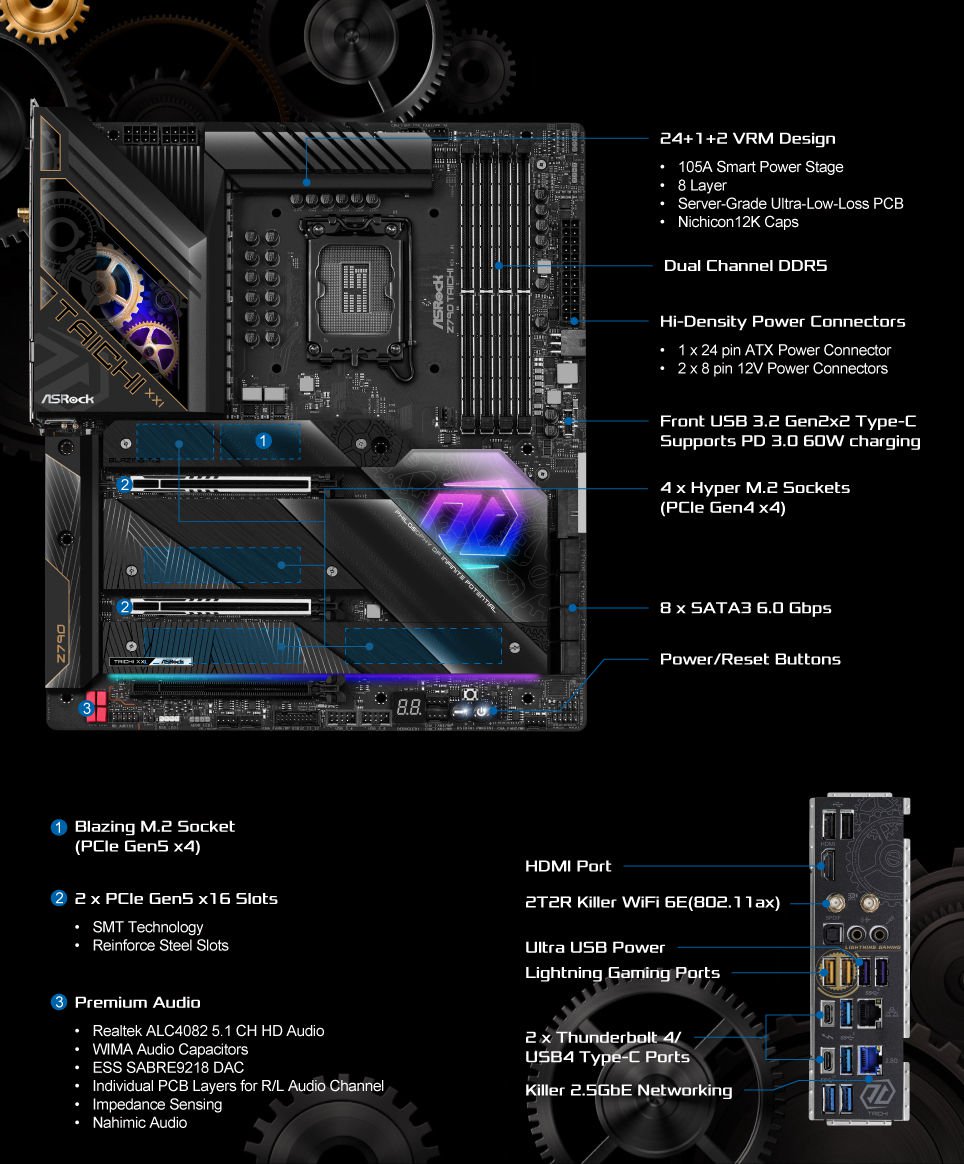ASRock's latest 600/700 series BIOS updates

The owners of non-K 14th generation Intel processors have something interesting to look forward to. ASRock has released new BIOSes for its range of Z790 motherboards that allow you to gain some 'free' performance. ASRock says it will roll out the update to its other LGA 1700 motherboards with 600 and 700 series chipsets in the near future.
The new BIOS enables access to a setting called CEP, or Current Excursion Power. This feature allows locked 14th generation processors to bypass current limits, thus allowing them to reach and sustain higher core frequencies. ASRock claims this can result in up to a 10% improvement in performance.
As an example they used the i7 14700 where they claim a 10% improvement in Cinebench R23 performance. It's impossible to say without testing it, but a guess would be that larger gains could be made with the i9 14900, which is even more power-constrained compared to the i9 14900K. These BIOSes contain the latest Intel microcode update.

ASRock's press release stated that it was the 'first' to roll out the update ahead of the Chinese New Year holidays. This means that other manufacturers will likely follow suit with their own updates before long. This isn't the first time we've seen some power tweaks to boost the performance of locked CPUs. ASRock itself previously enabled similar functionality on LGA 1200 motherboards with a feature it called 'Base Frequency Boost'.
By enabling higher PL1 current limits, users of non-K CPUs were able to achieve much higher long-term base clock rates. This 14th generation feature looks more or less the same. Of course, you need to make sure your cooling is capable of handling the resulting higher TDPs, and you need to be prepared for an increase in system power consumption as well.
If nothing else, it's a good way to get closer to the performance offered by a K-series processor at a cheaper price. At least that's the theory.
Latest motherboard
-
25 Aprmotherboard
-
24 Aprmotherboard
Gigabyte's XTREME Prestige announced
-
04 Aprmotherboard
PCIe 7.0 and 60GB/s SSDs will arrive in 2025
-
15 Marmotherboard
ASUS BIOS update supports 256GB DDR5
-
28 Febmotherboard
ASUS TUF Gaming B650-Plus WiFi
-
14 Febmotherboard
ASRock B650E TaiChi
-
09 Febmotherboard
ASRock's latest 600/700 series BIOS updates
-
30 Janmotherboard
MSI launches budget-friendly MPOWER Z790M motherbo
Most read motherboard
Latest motherboard
-
25 Aprmotherboard
ASRock & Biostar Confirm Ryzen 9000 Support
-
24 Aprmotherboard
Gigabyte's XTREME Prestige announced
-
04 Aprmotherboard
PCIe 7.0 and 60GB/s SSDs will arrive in 2025
-
15 Marmotherboard
ASUS BIOS update supports 256GB DDR5
-
28 Febmotherboard
ASUS TUF Gaming B650-Plus WiFi
-
14 Febmotherboard
ASRock B650E TaiChi
-
09 Febmotherboard
ASRock's latest 600/700 series BIOS updates
-
30 Janmotherboard
MSI launches budget-friendly MPOWER Z790M motherbo






